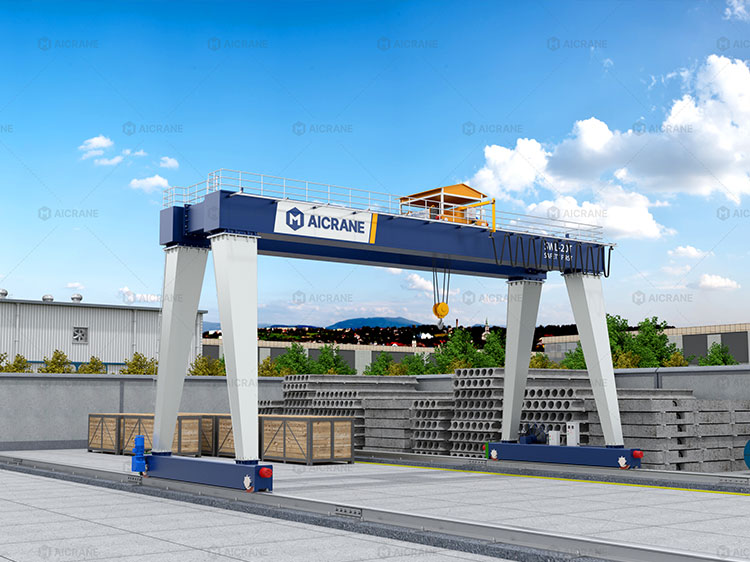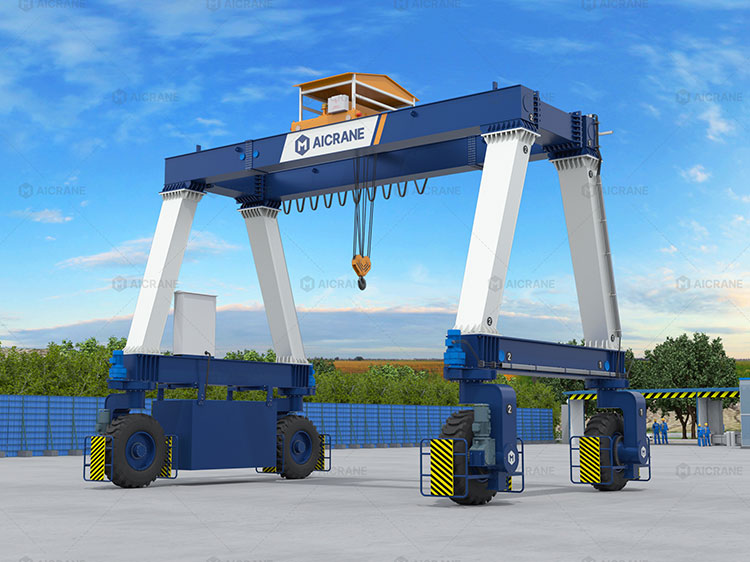The integration of Variable Frequency Drives (VFDs) into modern gantry crane systems represents a major leap forward in the realm of material handling. These drives offer remarkable advantages in terms of efficiency, precision, energy savings, and overall operational flexibility. As industrial demands increase and crane operations become more complex, VFDs have become an essential component in the modernization and optimization of gantry crane systems across various industries, including logistics, construction, manufacturing, and ports.
In this article, we will explore what a VFD is, how it works, the benefits of integrating VFD technology into gantry crane for sale, practical applications, and considerations for implementation.

What Is a VFD (Variable Frequency Drive)?
A Variable Frequency Drive is an electronic device used to control the speed and torque of electric motors by varying the frequency and voltage supplied to them. It is particularly beneficial for AC motors, which are commonly used in crane systems. The VFD allows the motor speed to be adjusted dynamically, rather than operating at a constant speed, which provides more control and adaptability in operations.
In the context of gantry cranes, VFDs are used to control multiple crane movements including hoisting, trolley travel, and gantry (crane) movement. By doing so, they offer smooth acceleration and deceleration, reduce mechanical stress, and enhance load handling precision.
Why Integrate VFDs into Gantry Cranes?
1. Smooth and Precise Motion Control
One of the primary benefits of VFD integration is the ability to control motion with high precision. Traditional crane systems using direct-on-line (DOL) starters often suffer from abrupt starts and stops, leading to load swing, wear and tear, and potential safety risks. VFDs allow soft starts and stops, which help reduce the sway of the lifted load, increasing safety and making operations more accurate.
2. Energy Efficiency
VFDs contribute significantly to energy savings. By regulating motor speed based on actual load requirements, the drive ensures that only the necessary amount of energy is consumed. In contrast, fixed-speed motors always run at full power, regardless of the task, which is inefficient.
In large heavy duty gantry cranes operating at ports or manufacturing facilities, this can translate into substantial reductions in electricity consumption and operating costs over time.
3. Reduced Mechanical Stress and Maintenance
Conventional crane motors often experience high torque during startup, which stresses mechanical components such as gears, couplings, and brakes. VFDs help eliminate these high-torque conditions by gradually increasing motor speed. This controlled operation extends the lifespan of mechanical parts and reduces the need for frequent maintenance.
4. Customizable Acceleration/Deceleration Profiles
VFDs enable operators to program different acceleration and deceleration rates for different tasks or load types. This flexibility is particularly valuable in operations requiring both heavy and delicate load handling. It ensures optimal control and minimizes the risk of damage to both the crane and the material being lifted.
5. Advanced Safety Features
Modern VFDs come equipped with safety functionalities such as overload protection, torque limits, and emergency braking systems. These features provide an additional layer of safety, ensuring crane operation remains within safe limits at all times.

Key Applications of VFDs in Gantry Crane Systems
1. Hoisting Mechanism
VFDs control the hoist motor to enable smooth lifting and lowering of loads. The ability to vary speed is critical for handling different weights and materials, ensuring the load is lifted or lowered gradually and without shock.
2. Trolley Travel
The trolley, which moves horizontally across the gantry, benefits from VFD integration through smoother transitions and speed adjustments. This enhances positioning accuracy and makes it easier for operators to place loads exactly where needed.
3. Gantry (Bridge) Travel
For the main crane movement along rails or rubber tires, VFDs provide better traction and reduce the risk of crane misalignment or derailing, particularly under high-load conditions or when operating on uneven surfaces.
Real-World Benefits: Industrial Case Scenarios
Port Container Handling
At busy container terminals, container gantry cranes with VFDs can handle containers with higher throughput due to their fast and accurate positioning. Reduced load sway translates into faster cycle times and improved safety for ground personnel.
Precast Concrete Plants
In heavy-duty environments like precast concrete production, gantry cranes equipped with VFDs manage high load volumes efficiently. They offer the flexibility to handle both large and fragile components without risking damage.
Warehouse and Logistics
Modern warehouse systems rely on precision and speed. Gantry cranes with VFDs ensure rapid yet controlled movement of goods, contributing to higher productivity and less risk of product damage.
Implementation Considerations
1. Motor Compatibility
Before integrating a VFD, it’s essential to verify whether the crane’s existing motors are compatible. Older motors may not be suitable for VFD control due to insulation limitations or cooling design.
2. Load Dynamics
Understanding the type and frequency of loads is crucial. VFD settings, including ramp times and torque limits, must be tailored to suit the operational needs of the crane.
3. Environmental Conditions
The operating environment can impact VFD performance. For example, cranes working in coastal or dusty environments may need VFDs with higher IP ratings and built-in filters to ensure durability.
4. Training for Operators and Maintenance Personnel
Successful VFD integration requires proper training for crane operators and maintenance staff. Understanding how to operate and troubleshoot VFDs can reduce downtime and ensure long-term reliability.
The Future of VFD Technology in Crane Systems
As industrial automation progresses, VFDs are evolving with new capabilities. Integration with PLCs (Programmable Logic Controllers), IoT platforms, and advanced diagnostics are becoming standard. These integrations provide real-time data on motor performance, energy consumption, and fault prediction—helping companies adopt predictive maintenance strategies and reduce unscheduled downtimes.
Moreover, with the rising emphasis on environmental sustainability, VFDs will continue to play a central role in reducing the carbon footprint of crane operations through energy optimization.
Conclusion
The integration of Variable Frequency Drives in modern gantry cranes represents a paradigm shift in crane operation and performance. From smoother movements and enhanced safety to energy savings and increased lifespan of crane components, the benefits are numerous and impactful. Whether used in ports, industrial plants, or warehouses, VFDs empower gantry cranes to operate smarter, safer, and more efficiently.
For businesses looking to future-proof their lifting solutions, embracing VFD technology in crane design and upgrades is no longer a luxury but a necessity. The upfront investment in VFD-integrated systems pays for itself over time through increased productivity, reduced maintenance, and lower energy bills – making it a smart choice in the competitive landscape of industrial lifting.